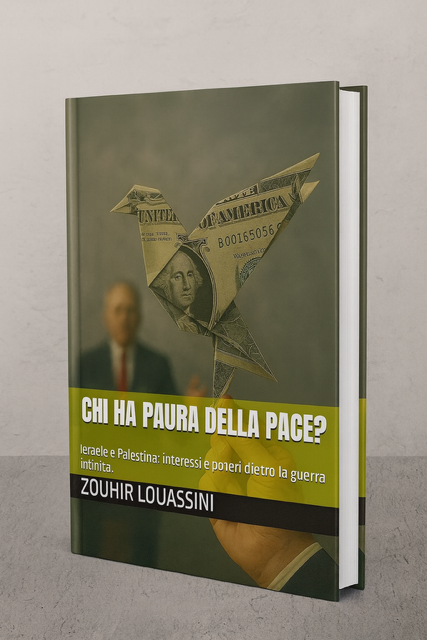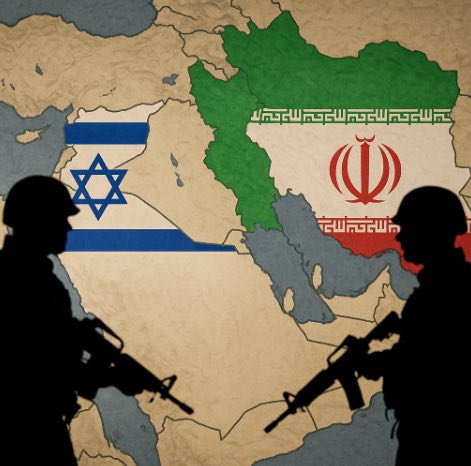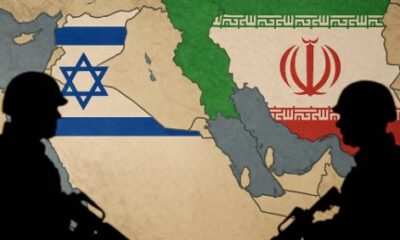Articoli
Which Islam?
Jihadism dates back to the ’20s, a period when totalitarianism was not restricted to Islamic contexts. For various historical reasons it comes to a head in the 2000s and feeds on the powers that oppose it.
Of the four caliphs that succeeded the Prophet Mohammed, three were murdered. The power struggle that Islam has experienced since its earliest beginnings is far from the idyllic image that some Muslims, especially the most orthodox, have of their religion. The jihadist ideology for example, is based on the possibility of going back in time to the ‘golden age’ of the prophet and his followers.
The idealization of the past is the main doctrine of a vision of the world that has been unable to assimilate, rejecting the changes of the modern reality of Islamic society. It is an expression of the frustration experienced by a part of the Arab world incapable of keeping up with global transformations, one that remains, therefore, on the margins of history. What the Western press, especially the Italian press, considers a danger is really no more than a problem, albeit a serious one, that should be faced in a lucid manner.
Jihadism and its violence often distracts from the genuine dangers that we actually need to be conscious of today. In order to focus on the real danger, it is necessary to view jihadist ideology, which is no more than an extension of political Islam, within its historical and social context.
It all began with the Muslim Brotherhood, which was established as a secret association in 1928 in Egypt, just a few years after the fall of the Ottoman Empire. The British occupied the country and the Western presence was experienced as an imposition of foreign values that aimed to destroy Islam.
Viewed internationally, this was the same period in which fascism and Nazism began to attract followers. The nationalist conception of these two movements certainly influenced the ideological vision of the Brotherhood, but there was a very important difference. Nationalism for the Muslim Brotherhood was not just a territorial projection: it was a religious identity.
Finally, there was the Arab-Israeli conflict. In 1935, the Brotherhood came into contact with Amin al-Husseini, the grand mufti of Jerusalem, and the organization took part in the Arab revolt in Palestine in 1936. In 1945, Said Ramadan created an armed wing of the Brotherhood with the aim of fighting the Zionist movement. The Muslim Brotherhood went on to take an active part in the Arab- Israeli conflict in 1948.
The organization, seen by many observers as a populist movement, has never dropped the motto that summarizes its ideology: “Allah is our objective. The Prophet is our leader. The Qur’an is our law. Jihad is our way. Dying in the way of Allah is our highest hope”.Could they be any clearer?
Although this Islamist movement was founded by Hassan al-Banna (1906-1949), the supreme ideologue of the Muslim Brotherhood was Sayyid Qutb (1906-1966). His work is a genuine manifesto for political Islam. Qutb believed that Islam was in crisis because millions of people that claimed to be Muslim actually understood very little about their religion.
To put it simply, they were not real Muslims. It was deemed necessary, therefore, to return to the original values of the religion, the real values. In order to guide the masses, an elite was required that could perform the same role that the followers of the Prophet fulfilled during the dawn of Islam. In numerous books, Qutb referred to this elite as annawâteassalba (literally, the “hard nut”). Therefore, the aim was to re-Islamize society because Islam was the solution for all political, economic and social problems. This provided a simple and clear discourse that cut straight to the heart of a society that felt it was the victim of an international Zionist plot. The logic of the conspiracy is, in fact, an integral part of Qutb’s ideological vision.
The references that Qutb made to the Quran, and especially the interpretation of surahs, or chapters, 57 (al-Hadid) and 112 (al-Iklhas), earned him a reputation as the father of the interpretation of apostasy (al-Takfir). Qutb justified the use of violence and terrorism against non-Muslims and apostates in an attempt to hasten the kingdom of Allah. It is thus no coincidence that names such as Osama Bin Laden, Ayman Al-Zawahiri and Abdullah Azzamare among those that have put these principles into practice through the creation of terrorist networks with truly global scopes.
Jihadism as we know it today is no more than the fruit of a totalitarian doctrine that uses religion to conceal its own political objectives and struggles to obtain power. Such a doctrine considers all of modernity to be a danger because it is seen exclusively as the fruit of the evolution of Western culture, which is perceived as an antagonist of Islam. Such sentiments find significant ideological support in the literature of the Muslim Brotherhood.
This ideology also finds fertile ground in the reality of Islamic countries because the West is unable to find a non-military ‘remedy’ for local problems. The dominant culture in Muslim countries wants religion and government to be one and the same. This fact is most immediately useful for those who wish to use their faith in order to obtain power. The transformation of the revolts of the Arab Spring into Islamic revolutions, for example, was facilitated by the ambiguity of secular political forces. Called upon to propose a political project free from any religious connotations, they were unable to do so. Even today, they cannot promote secular politics without being viewed as a fifth column for the Western enemy.
When in an editorial on 11 July 2013, Le Monde claimed that “Islamism is not a project for government”, it failed to acknowledge that there are two countries in the region that, in spite of the great differences between them, are governed by this ideology: Iran and Turkey.
Turkey, constitutionally speaking, is both democratic and secular and belongs to the Sunni majority. Meanwhile, Iran is the heart of Shia Islam and represents a theocracy par excellence. But how can these two countries that are so different, with political disagreements that have never been concealed, share the same ideology?
Turkey’s Adalet ve Kalkınma Partisi (AKP), or Justice and Development Party, in government in Ankara since 2002, was forged in the tradition of political Islam but has moderated somewhat in order to find its place within a conservative democracy. For this reason, there are many who claim that the AKP has a hidden agenda that coincides with that outlined by the Muslim Brotherhood.
The party’s founder and current national president, Recep Tayyip Erdogan, was imprisoned in 1998 after having been found guilty of inciting religious hatred by publicly reciting the verses of poet Ziya Gökalp who wrote, “the mosques are our barrack the domes our helmets, the minarets our bayonets and the faithful our soldiers”. Since coming to power, and after having rounded off some of the spiky edges of his discourse, Erdogan is viewed by some as having done little more than seeking to undermine the secularity of the state.
In the case of Iran, at first glance, it is very difficult to perceive any type of connection between the Muslim Brotherhood and the Islamic Republic. Indeed, the Brotherhood’s theological source is Sunni radicalism, while Iran is the home of Shia Islam. However, the connection exists, and we can find it in Khomeini’s revolution.
Michael Prazan, writer and director of the documentary Muslim Brotherhood: the ultimate totalitarian ideology, explained that, in spite of the theological and religious differences, from an ideological point of view, there are very few differences between the Iranian Islamic revolution and the Muslim Brotherhood. In 1954, the famous Iranian cleric and activist Navaf Safavi(1924-1955) headed to Cairo at the invitation of Sayyid Qutb. Safavi had read all of Qutb’s works and shared his ideas, including those concerning the re- Islamization of society. At the end of his journey, Safavi decided to change the name of his movement from Fedayeen dell’Iran to al-MuslimeenIkhuan (the Muslim Brotherhood). Safavi was to introduce the Brotherhood’s ideas to the leader of the Iranian Revolution, Ayatollah Khomeini. The latter often quoted Sayyid Qutb in his speeches.
The current leader of the supreme Iranian Revolution, Ayatollah Khamenei has translated two of Qutb’s most important books into Persian. These two volumes have been widely distributed in Iran and are considered to be among the most widely read Islamic books today. It is no coincidence that the ideas of Sayyid Qutb can be found in the fundamental principles of the Islamic Republic of Iran. The pragmatic or ‘moderate’ face of political Islam cannot hide from the fact that modern jihadism is the fruit of the same seed. Al-Qaeda, IS, Boko Haram and all of the violent movements that refer to the Islamic religion are no more than different shades of an ideology that is gaining ground every day. Unless a global vision is able to understand the root of the problem, all of the military efforts – if not accompanied by a valid cultural project that highlights the complexities and genuine conflicts and difficulties of the Middle East situation – will be not be sufficient to fight the cancer that, for the moment, is devouring the majority of the Islamic Arab world. For the moment.
Articoli
Chi ha paura della pace?

La parola pace in Medio Oriente è stata talmente usata, manipolata e svuotata che oggi sembra quasi impronunciabile. Nonostante decenni di negoziati falliti, guerre senza tregua e cicli infiniti di violenza, resta l’unica via possibile. Ma chi la ostacola? Chi ha davvero paura della pace?
È questa la domanda al centro del nuovo libro di Zouhir Louassini, giornalista e scrittore, che scava nei nodi più dolorosi del conflitto israelo-palestinese. Il volume non indulge in retorica: parte da fatti concreti, come il massacro del 7 ottobre 2023, quando Hamas ha colpito brutalmente civili innocenti, tra i quali anche israeliani impegnati nel dialogo con i palestinesi. Un atto di violenza che ha avuto un unico obiettivo: distruggere ogni possibilità di convivenza.
Ma l’autore non si ferma a denunciare la barbarie di Hamas. Con la stessa lucidità mette in luce le responsabilità del governo Netanyahu e della destra israeliana, che da anni alimentano un clima di paura, colonizzazione e vendetta. Una leadership che ha usato la retorica della sicurezza per rafforzarsi politicamente, mentre la prospettiva di una pace reale si allontanava sempre di più.
Louassini mette in parallelo queste dinamiche con l’uso distorto delle parole: leader che parlano di “pace” mentre alimentano la guerra, promesse che si trasformano in imposizioni, un linguaggio politico che ricorda le distopie di Orwell, dove i significati vengono rovesciati.
Chi ha paura della pace? è un testo giornalistico ma anche una riflessione universale: mostra come la pace faccia paura a chi vive di conflitto, a chi trae forza e consenso dall’odio. E invita i lettori a chiedersi se la guerra sia davvero inevitabile, o se esista ancora spazio per immaginare scenari pragmatici di convivenza.
Non offre illusioni, ma pone la domanda più scomoda e necessaria: la pace è davvero un’utopia, o è la nostra unica possibilità di futuro?
Articoli
Partita a scacchi su un ring di pugilato: tra Israele e Iran il nuovo round di una spirale infinita

Gaza, Hezbollah, Siria, Iran: ogni fronte è inserito in una logica coerente, volta a smantellare le reti di minaccia alla sicurezza israeliana
Nel ring infuocato del Medio Oriente, il conflitto tra Israele e Iran somiglia sempre più a un ibrido tra una partita di scacchi e un incontro di pugilato. Israele gioca con freddezza strategica: colpisce con precisione chirurgica obiettivi militari, basi e infrastrutture sensibili. Ogni mossa è calcolata, ogni attacco ha un valore operativo ma anche simbolico.
L’Iran, invece, sembra un pugile stordito. Reagisce con colpi confusi, spesso imprecisi, più guidato dall’impulso che da un piano. I droni lanciati in massa, i razzi sparati senza un bersaglio definito, le minacce ripetute ma inefficaci: tutto parla di frustrazione più che di forza.
Ma il vero squilibrio non è solo militare. È soprattutto geopolitico. Teheran si ritrova sempre più isolata. I suoi alleati storici sono in difficoltà: Hezbollah è logorato in Libano da attacchi continui e da una crisi economica devastante; gli Houthi in Yemen sono sotto tiro diretto degli Stati Uniti; Hamas, dopo l’attacco del 7 ottobre 2023, è intrappolato nella guerra brutale di Gaza. La “mezzaluna sciita”, un tempo simbolo dell’influenza regionale iraniana, si è incrinata sotto il peso della risposta israeliana e dell’isolamento diplomatico.
Anche sul piano internazionale, l’Iran non trova più appoggi solidi. La Russia, pur legata da interessi militari e strategici, è assorbita dalla guerra in Ucraina e non ha alcuna intenzione di aprire un nuovo fronte. La Cina mantiene una distanza prudente: intrattiene rapporti economici con Teheran, ma non intende compromettere la sua immagine globale per una potenza sempre più ingombrante. Mosca e Pechino giocano su più tavoli, ma oggi scelgono la cautela. Nessuno è disposto a esporsi per un Iran sempre più isolato.
Israele, al contrario, agisce con la consapevolezza di avere il vento a favore. Gli Stati Uniti garantiscono copertura diplomatica, supporto tecnologico e una forte capacità di deterrenza. Le potenze occidentali, con sfumature diverse, condividono la percezione dell’Iran come minaccia alla stabilità regionale. Anche molti paesi arabi, pur evitando dichiarazioni ufficiali, vedono con favore il contenimento dell’espansionismo iraniano. Non si può parlare di legittimità internazionale – l’ONU non ha mai approvato formalmente le azioni israeliane – ma è chiaro che Tel Aviv opera dentro un contesto di ampio consenso politico, seppur non dichiarato.
Soprattutto, Israele agisce secondo una visione. La risposta all’attacco del 7 ottobre non è stata solo militare: è parte di una strategia a lungo termine per ridisegnare gli equilibri regionali. Gaza, Hezbollah, Siria, Iran: ogni fronte è inserito in una logica coerente, volta a smantellare le reti di minaccia alla sicurezza israeliana. È una dottrina fondata su azione preventiva, superiorità tecnologica e iniziativa diplomatica.
Ma tutto questo solleva una domanda cruciale: quanto può durare questa spirale? Fino a quando la sicurezza israeliana potrà basarsi su guerre preventive, attacchi anticipati, operazioni giustificate da minacce reali o anche solo percepite? Perché anche la semplice sensazione di una minaccia, per Israele, si traduce quasi sempre in un’azione militare. È una strategia che ha prodotto risultati tattici, ma ha anche cronicizzato il conflitto. Ogni guerra genera la successiva.
Dal 1948, anno della nascita dello Stato di Israele, il Medio Oriente non ha mai conosciuto una pace duratura. Solo tregue provvisorie, pause tra una crisi e l’altra. Il paradosso è tutto qui: per difendersi, Israele è costretto ad attaccare. Ma ogni attacco riaccende il fuoco, rafforza il nemico, alimenta nuove tensioni.
Forse è il momento di affiancare alla forza una visione politica diversa. Perché la sicurezza, quella vera, nasce anche da una giustizia riconoscibile. E giustizia, in questa regione, significa accettare finalmente la creazione di uno Stato palestinese indipendente, con interlocutori legittimi e affidabili — non certo Hamas. Un processo difficile, certo, ma che potrebbe finalmente dare senso a un equilibrio fondato non solo sulla deterrenza, ma anche sulla legittimità e sul rispetto reciproco.
Finché la pace resterà un’idea astratta e non un progetto concreto, ovvero un “compromesso” ragionevole fra tutti gli Stati della regione, il Medio Oriente continuerà a giocare a scacchi con i pugni. E ogni vittoria, per quanto brillante, sarà solo il preludio a un nuovo round.
Pubblicato il 15/6/2025 su Rainews
Articoli
Tangeri, 1890. Intrigo, potere e resistenza: La strategia del pesce nano, il primo romanzo di Zouhir Louassini
Una storia avvincente ispirata a fatti reali che riporta alla luce una pagina dimenticata della storia marocchina, tra spionaggio, tensioni internazionali e dignità ferita.
 È disponibile su Amazon La strategia del pesce nano, il primo romanzo dello scrittore e giornalista marocchino Zouhir Louassini. Ambientato nella Tangeri del 1890, il libro trascina il lettore in un’indagine che va oltre il mistero iniziale – l’assassinio di un cittadino italiano – per esplorare gli intricati rapporti di forza tra il Marocco e le grandi potenze coloniali.
È disponibile su Amazon La strategia del pesce nano, il primo romanzo dello scrittore e giornalista marocchino Zouhir Louassini. Ambientato nella Tangeri del 1890, il libro trascina il lettore in un’indagine che va oltre il mistero iniziale – l’assassinio di un cittadino italiano – per esplorare gli intricati rapporti di forza tra il Marocco e le grandi potenze coloniali.
Tangeri, all’epoca, era una città di frontiera e d’intrigo, abitata da consoli stranieri, spie, mercanti e diplomatici che operavano sotto la protezione di un sistema consolare arrogante e impunito. Louassini costruisce, con eleganza narrativa e rigore storico, un giallo politico che illumina i meccanismi opachi dell’epoca, le tensioni diplomatiche e le strategie sottili adottate da chi – pur privo di potere militare – cercava di sopravvivere e difendere la propria sovranità.
Il titolo del romanzo, La strategia del pesce nano, diventa emblema di questa resistenza silenziosa: quella di chi, pur piccolo e fragile, riesce a muoversi con astuzia nel mare agitato degli imperi coloniali.
Con uno stile limpido e cinematografico, il romanzo restituisce una Tangeri affascinante e contraddittoria, sospesa tra tradizione e modernità, tra dominio straniero e orgoglio marocchino. Louassini non si limita a raccontare un fatto di cronaca: invita il lettore a riflettere sul presente, sulle relazioni di forza internazionali, e sulla sottile linea tra giustizia e impunità.












